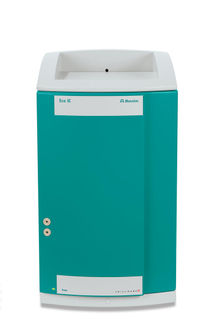To use all functions of this page, please activate cookies in your browser.
my.chemeurope.com
With an accout for my.chemeurope.com you can always see everything at a glance – and you can configure your own website and individual newsletter.
- My watch list
- My saved searches
- My saved topics
- My newsletter
Lepidolite
Product highlightLepidolite (KLi2Al(Al,Si)3O10(F,OH)2) is a lilac or rose-violet colored phyllosilicate mineral of the mica group that is a secondary source of lithium.[1] It is associated with other lithium-bearing minerals like spodumene in pegmatite bodies. It is one of the major sources of the rare alkali metals, rubidium and caesium.[2] Physical Properties
Associated Minerals: quartz, feldspar, spodumene, amblygonite, tourmaline. Notable Occurrences: Brazil; Ural Mountains, Russia; California; Tanco Pegmatite, Bernic Lake Manitoba, Canada. References
See also: List of minerals Categories: Phyllosilicates | Lithium minerals | Potassium minerals | Aluminium minerals |
| This article is licensed under the GNU Free Documentation License. It uses material from the Wikipedia article "Lepidolite". A list of authors is available in Wikipedia. |







